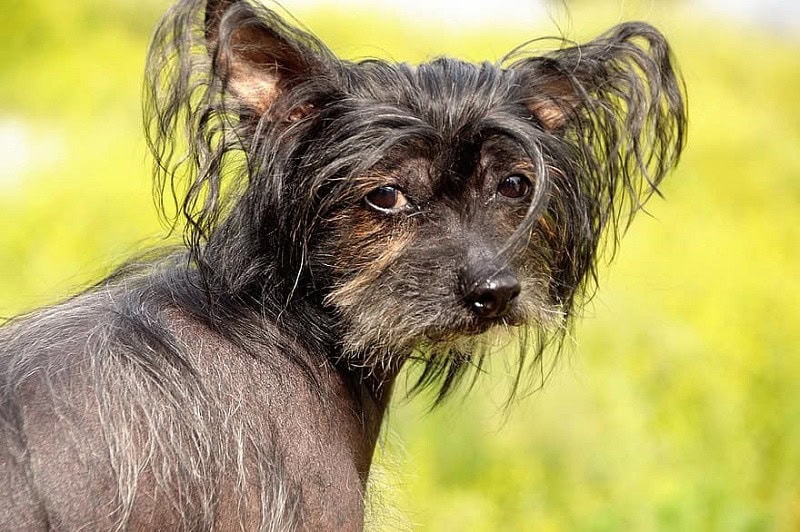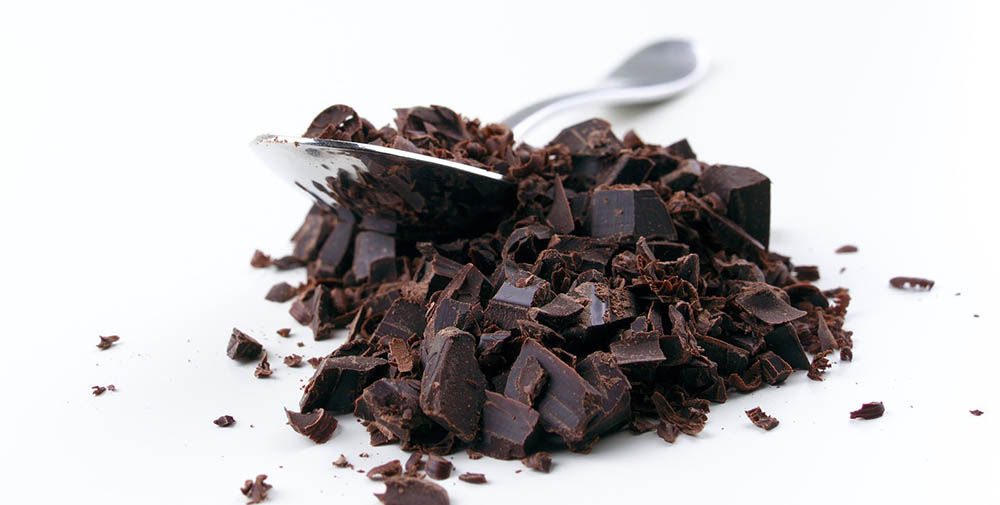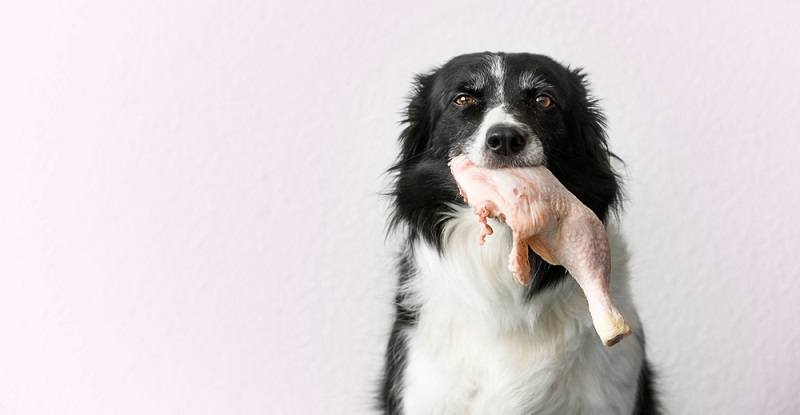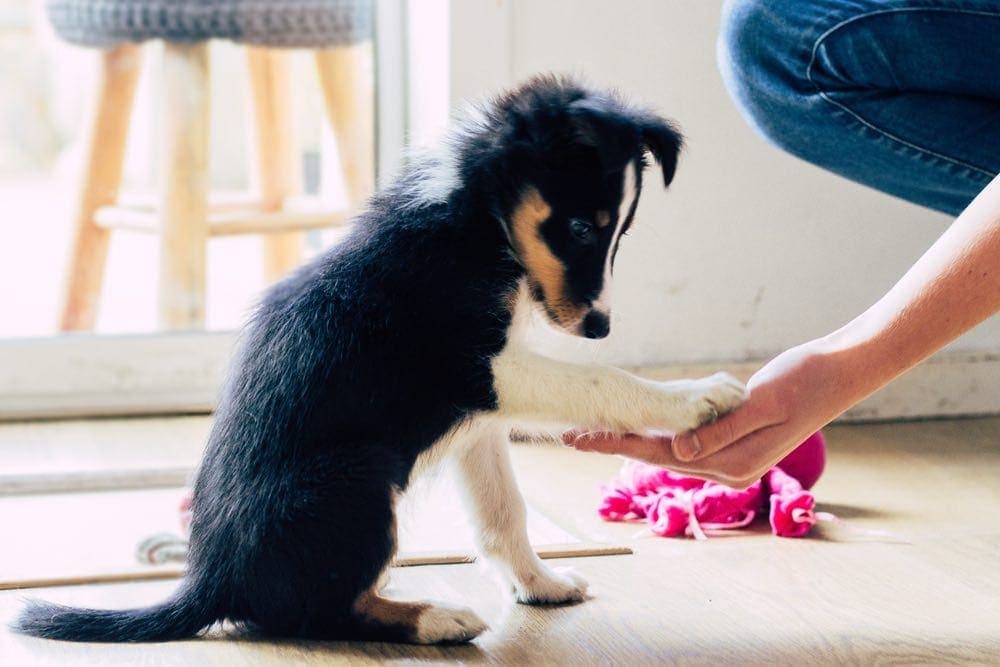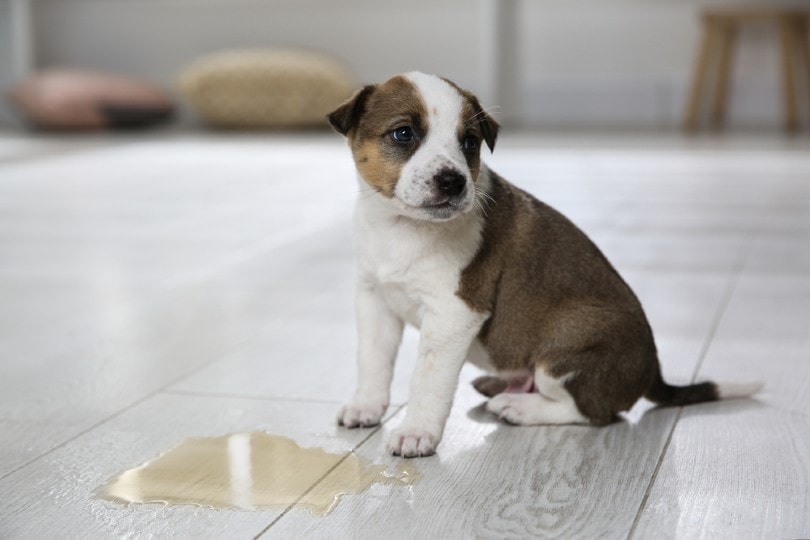Height:
11 – 13 inches
Weight:
8 – 12 pounds
Lifespan:
13 – 18 years
Colors:
Hairless with pink and black skin and white tufts, or all coat colors for the powderpuff (black, white, blue, mahogany, copper, lavender, fawn, cream, etc.)
Suitable for:
Apartment dwellers, work-from-home professionals, mature owners, families with older children
Temperament:
Alert, Lively, Accommodating, Affectionate, Prone to separation anxiety
From first glance, everything about the Chinese Crested seems unique and strange. Despite their name, this breed almost definitely did not originate in China; and despite their classification as a hairless dog, they’re also found in a decidedly fluffy “powderpuff” variation. Once you get past these initial confusions, however, you’ll find a marvelously healthy and mild-mannered toy group dog that’s perfect for relaxed owners and families with older children.
Whether you’re just curious to know more about this distinctively groomed breed or you are considering making one a part of your family, this guide is for you. Read on to discover more about the mysterious origins and history of unique dog breed, as well as what it’s like to own and care for both the hairless and powderpuff varieties. Along the way, we’ll introduce you to the basics of everything you need to know before deciding whether a Chinese Crested is right for you.
Chinese Crested Puppies – Before You Buy….
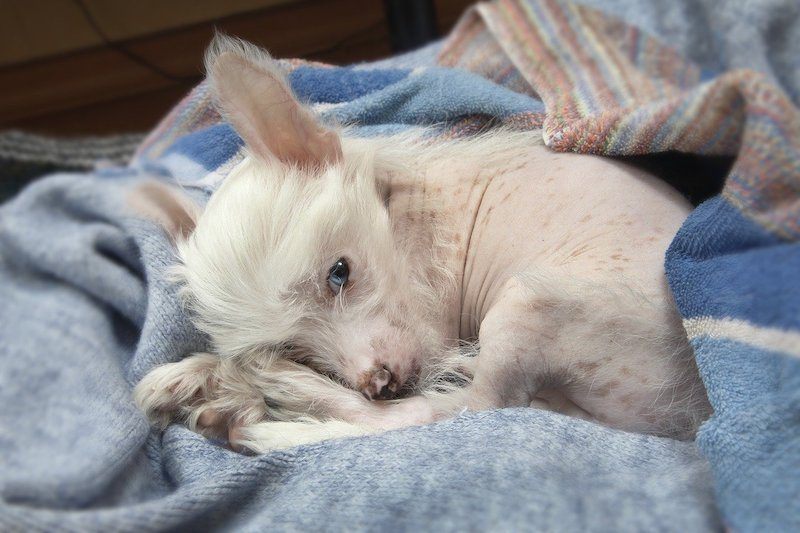
No matter whether the hairless or delightfully fluffy variety of Chinese Crested appeals most to you, the requirements of time, money, and energy necessary to welcome one into your home are a serious commitment. Before making a judgment on whether your lifestyle matches up well with the Crested, we think it’s helpful to learn more about where the dog came from – including what it was bred for, and how that has changed over time.
Generally believed to have descended from larger African hairless dogs, canine historians surmise that Chinese breeders miniaturized the Crested in much the same way as they did for the Shih Tzu and Pekingese. Whether this is entirely accurate is not as important as what came next, when Chinese trading vessels were first seen carrying these “Chinese Ship Dogs” around the world as both companion animals and rat chasers.
As they traveled and traded, these Chinese merchant ships sold Cresteds in global ports of call from Egypt to Turkey and South Africa. There, they were often crossbred with local dogs to continue a lineage of hairless mousers. From these port towns, European sailors were introduced to the Chinese Crested during the Age of Exploration, from which we now have records of their eventual adoption in the United States.
Beginning with the works of two American women in the late 1800s, the Crested was promoted through their journalism and breeding efforts. Eventually, the American Chinese Crested Club was formed in 1979 and officially recognized by the American Kennel Club in 1991.
Affectionately known as the “Dr. Seuss Dog” owing to its crazy tufts of hair and spunky attitude, the generally happy-go-lucky and alert nature of the Chinese Crested has combined with its hearty bill of health to make it a popular companion animal in the U.S. Equally happy to accompany you on walks or simply lie on the couch all day watching television, they’re an easygoing pet whose fairly extreme grooming requirements should not deter you from welcoming one into your home.
In the hairless variety, the Chinese Crested can vary in the amount of hair covering on its muzzle, tail, and paws. Their pale to dark black skin is especially prone to irritation and sunburn and requires considerable preventative effort to keep happy and healthy.
Powderpuff variety Cresteds have a long, soft coat that can even resemble that of a common terrier. Especially smooth and silky, this double coat does a fantastic job of protecting the powderpuff from many of the skin irritation problems experienced by the hairless.
Overall, the Chinese Crested is most remarkable in its relatively low incidence of genetic predispositions to disease, making it perhaps the healthiest toy breed of dog in existence. A long lifespan attests to this as well, with many Chinese Cresteds living in excess of 15 years.
What’s the Price of Chinese Crested Puppies?
Both varieties of the Chinese Crested are not especially easy to breed, making them a relative rarity as a purebred dog. After finding a reputable breeder, you can expect to pay anywhere from $1,000 to $4,000 for a Chinese Crested puppy, or even more if its parents possess an notable pedigree.
To start your search for a responsible breeder, we strongly recommend utilizing the American Kennel Club’s Puppyfinder, located here. Since the breed has quite stringent standards for inclusion in competitions, any of the breeders listed on this official page will be certified as taking excellent care of the health of their animals.
3 Little-Known Facts About Chinese Crested
1. Hairless and Powderpuff puppies can be born in the same litter.
Because the hairlessness of a Chinese Crested is an incomplete dominant genetic trait, individual instances of hair or hairlessness can vary from puppy to puppy even within a single litter. This also helps to explain why the amount and location of hair in the hairless variety can vary so much from puppy to puppy – in short, hairlessness is the weakest genetic material available, while the presence of hair can change quickly depending both on the parents and momentary breeding conditions.
2. A Chinese Crested was the winner of the World’s Ugliest Dog Competition for three years in a row.
A purebred hairless Chinese Crested dog named Sam was the dubious champion of Petaluma, California’s World’s Ugliest Dog competition from 2003 to 2005. Old, blind, and generally terrifying in appearance, Sam won his owner over $3,000 in his three-year reign as champ, only ceding the title after passing away in 2005 at the ripe old age of 15 years old. Sam is the only dog to win the title of Ugliest Dog three years in a row.
3. Chinese Crested dogs have often been featured in cartoons and films.
Owing to their distinctively strange appearance, the Chinese Crested personality has been displayed in such varying roles as:
- Giuseppe from Marmaduke
- Krull the Warrior King from How to Lose a Guy in 10 Days
- Romeo from Hotel for Dogs
- Fluffy from 102 Dalmatians
- Peek from Cats & Dogs
- Bobby from The Young and the Restless
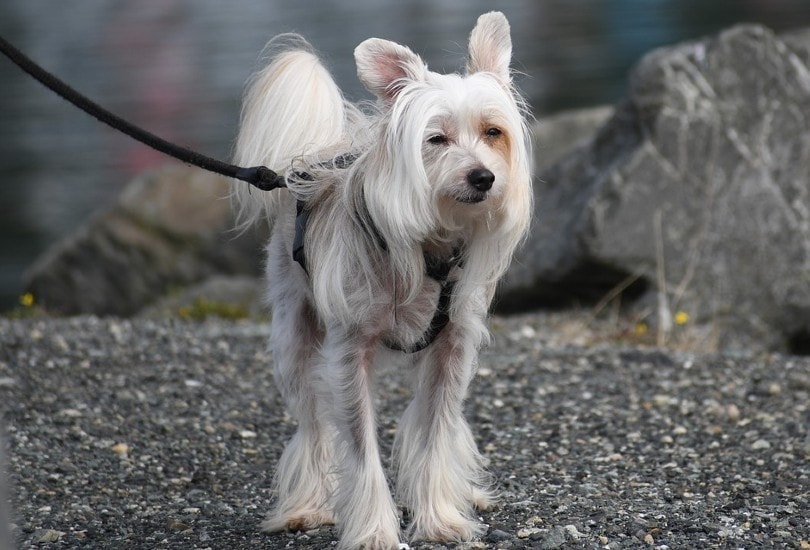
Temperament & Intelligence of the Chinese Crested
Whip-smart but often lacking any distinct motivation for training, the Chinese Crested is a go-with-the-flow sort of dog that prizes quiet time over vigorous activity. An excellent companion animal for anyone that works at home, the Crested loves to spend time near its owners but isn’t much of one for time spent outdoors or sporting activities.
Requiring a gentle hand not just because of their sensitive skin, the Chinese Crested can easily suffer separation anxiety if left alone for too long. They tend to be a little shadow to their owners and family members, always following in your footsteps until you decide to sit down again. Then, they quickly become a constant lap dog companion.
Are These Dogs Good for Families?
For certain types of families, the Chinese Crested can enjoy a harmonious relationship of constant companionship without overstimulation. Given their delicate bone structure, small stature, and sensitive skin, they’re not a great choice for families with small children. In families with older children that know how to handle a dog gently, they’ll be incredibly happy and thankful for the extra attention that another person can give them.
Does This Breed Get Along with Other Pets?
The Chinese Crested is able to become quite friendly if socialized from a young age but may not take kindly to interactions with more vigorous dog breeds. It’s a funny truism that the best dog companion for a Chinese Crested is another Chinese Crested – but any other small and gentle breed of dog can easily become a steady companion that will help alleviate the Crested’s nervous anxiety when left alone.
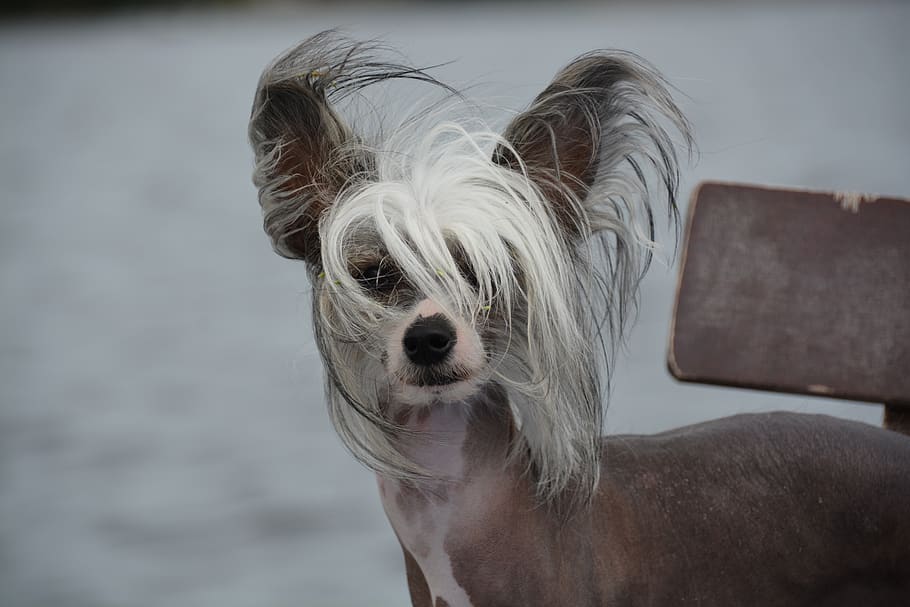
Things to Know When Owning a Chinese Crested:
After learning a bit more about the Crested, are you thinking it might be the right dog for your home and lifestyle? If so, the next step to take is to learn everything you can about their nutrition, exercise, and considerable grooming requirements. While they are a relaxed dog breed in many regards, the Crested requires more attention to its coat and hair than almost any other purebred dog.
Food & Diet Requirements
Given their diminutive statures, Chinese Crested dogs require small portions of dog food. Anywhere from ¼ to ¾ cup of high-quality dry dog food per day will be enough to keep your Crested happy and healthy. Divide this up into three meals, spaced evenly throughout the day, to discourage overfeeding and the resulting tummy aches that can occur afterward.
To choose the best dog food for your Crested, first pick a formula based on their age. Puppies, adults, and senior dogs all have different nutrition requirements, and this is doubly true for the Crested.
Then, you’ll have to test small portions of this food to make sure your dog tolerates it well. While generally possessed of a robust digestive system, many Cresteds will quickly develop allergies and intolerances that can be difficult to diagnose. If your Crested turns their nose up at food, breaks out in a rash, or seems lethargic after eating, chances are it’s time to try a different food formulation.
Exercise
In exchange for the added hours of grooming and skincare that you’ll need to put in to keep a Chinese Crested healthy, you’ll be glad to know that their exercise requirements are minimal. Short daily walks or a few rounds of fetch in the backyard are plenty to satisfy dogs of this breed but be sure to outfit them with protective clothing or sunscreen while playing outdoors.
Even though they don’t have a strong desire for vigorous playtime, Chinese Cresteds can be surprisingly athletic and agile. You’re most likely to see this when they’ve decided to escape from an enclosure, dodging and juking to stubbornly prevent recapture. Once they think that your chasing them is a game, the Chinese Crested can become surprisingly competitive in its aversions.
Training
With a personality placed smack in the middle between stubborn and eager to please, the Chinese Crested can be encouraged to respond well to training because of how much it loves spending time with its owner. A competitive streak can further encourage them to enjoy canine sports like flyball, obedience, and agility training – but their sensitive personalities mean that you’ll need to be especially careful to offer positive reinforcement at every turn.
Early-life training is essential to a Chinese Crested’s happiness and willingness to learn later in life and should be attended to by a professional if you’re not entirely comfortable with it yourself. Enroll them in puppy socializing and obedience courses and you’ll be richly rewarded with a more friendly and amiable companion in old age.
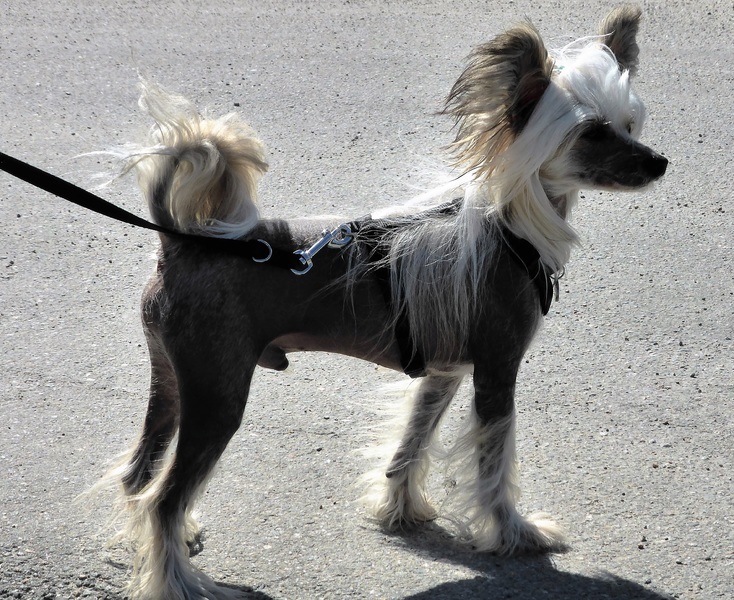
Grooming ✂️
The most serious commitment of all for owners of a Chinese Crested, grooming and hygiene matters will become a primary focus of your time together. While both the hairless and powderpuff varieties will require regular toenail clipping and teeth brushing, their grooming requirements otherwise differ significantly.
For hairless Cresteds, maintenance of their bare skin is remarkably similar to taking care of very sensitive human skin. Susceptible to acne, sunburn, and painful dryness, you’ll need to keep a close and constant eye on the quality and consistency of your friend’s skin.
- Hypoallergenic moisturizing cream to prevent dryness
- Baby sunscreen to prevent sunburns
- Wearing sweaters during the colder months to maintain a regular body temperature
- Regularly shaving the small hairs next to the skin to prevent irritation
Powderpuff Cresteds, on the other hand, require daily brushing of their soft and straight double coats. Weekly baths will help prevent knotting and matting, and you’ll need to be careful to avoid brushing the hair when dry or dirty as it can cause hair breakage. Many powderpuff owners choose to shave part of their dogs for easier maintenance.
Try one of these to prevent dry skin:
Health and Conditions
As one of the healthiest of the toy breeds of dogs, the Chinese Crested is prone to a much smaller list of health issues than other lapdogs. Still, you may find the following conditions during the course of a Chinese Crested’s life:
- Deafness
- Glaucoma
- Progressive retinal atrophy
- Seizures
- Patellar luxation
- Legg-Perthes disease

Male vs Female
Being a smaller and gentler breed to begin with, you’ll not notice many differences between male and female Chinese Crested dogs. Some owners report that females are more prone to weight gain as they age, while males can be more stubborn and likely to escape their enclosures. Both the hairless and powderpuff variations display similar qualities no matter their gender.
Final Thoughts
An incredibly unique dog with a mysterious history, the Chinese Crested is unlike any other breed alive today. Small but generally laid-back, they can live their best lives in households that enjoy peace and quiet rather than rambunctious activity. If you’re looking for a long-lived lap dog that will gladly cuddle on the couch with you all day long, the Chinese Crested fits the bill perfectly.
Featured Image Credit: Eskimokettu, Pixabay

